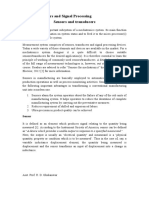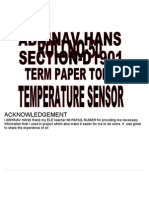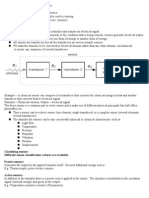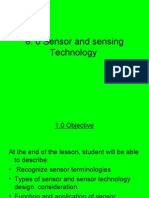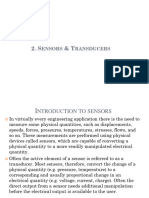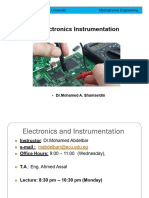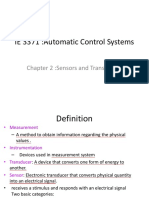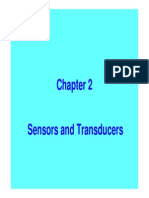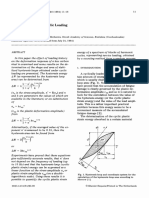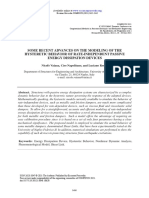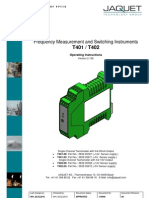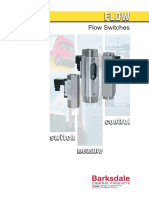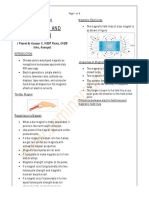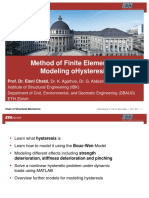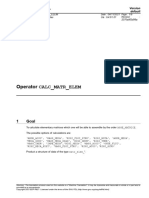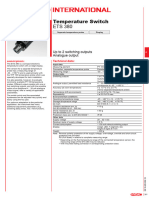0% found this document useful (0 votes)
17 views28 pagesSensor Selection Uscc
The document outlines key parameters for sensor selection, including accuracy, sensitivity, zero-offset, reproducibility, span, stability, resolution, selectivity, response time, self-heating, hysteresis, ambient conditions, overload characteristics, operating life, and non-functional aspects like cost, size, and weight. It also discusses various types of temperature sensors such as RTDs, thermistors, thermocouples, and infrared sensors, highlighting their merits and demerits. Additionally, the importance of sensor integration and issues related to dead volume in sensor housing are addressed.
Uploaded by
sharvari chanekarCopyright
© © All Rights Reserved
We take content rights seriously. If you suspect this is your content, claim it here.
Available Formats
Download as PDF, TXT or read online on Scribd
0% found this document useful (0 votes)
17 views28 pagesSensor Selection Uscc
The document outlines key parameters for sensor selection, including accuracy, sensitivity, zero-offset, reproducibility, span, stability, resolution, selectivity, response time, self-heating, hysteresis, ambient conditions, overload characteristics, operating life, and non-functional aspects like cost, size, and weight. It also discusses various types of temperature sensors such as RTDs, thermistors, thermocouples, and infrared sensors, highlighting their merits and demerits. Additionally, the importance of sensor integration and issues related to dead volume in sensor housing are addressed.
Uploaded by
sharvari chanekarCopyright
© © All Rights Reserved
We take content rights seriously. If you suspect this is your content, claim it here.
Available Formats
Download as PDF, TXT or read online on Scribd
/ 28
